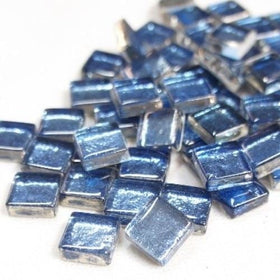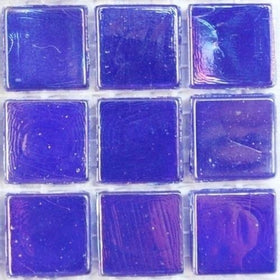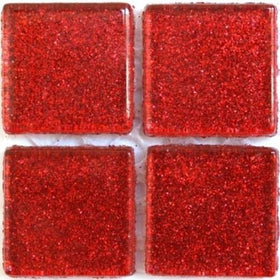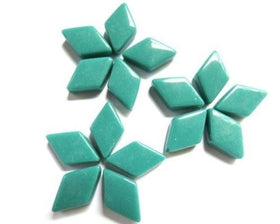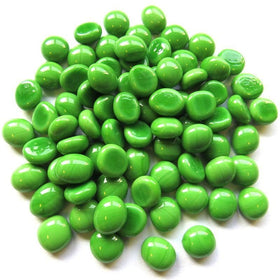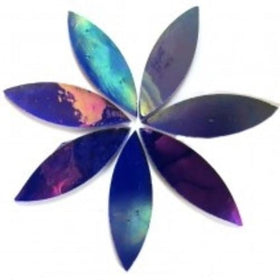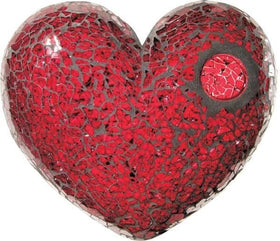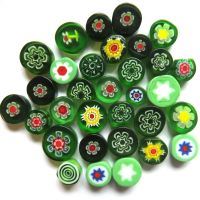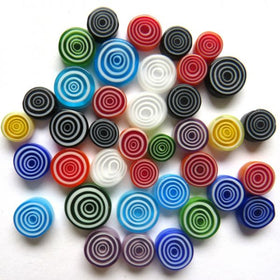
The Mosaic Art of Pompeii
Mosaics were used at least as far back as 400 BC, as is evidenced by the existing tiles that adorned the great palace floors of Pella in Greece, the birthplace of Alexander the Great. Fast forward a few centuries later, in AD 79, Pompeii and several other Roman communes were tragically covered in a thick layer of ash when Mount Vesuvius, now nicknamed the 'Sleeping Giant' by locals, infamously erupted. One upside to the disaster from a historical standpoint was that the ash preserved large areas in the vicinity and many of the mosaic works of art that were recovered can still be seen to this very day. The mosaics are displayed on-site, in Pompeii itself, and at the National Archaeological Museum of Naples.
Mosaics from this era give a real insight into Roman life and the depictions are as intricate and impressive as they are varied. Perhaps one of the quirkiest examples is this commemorative pot of fish sauce, which ancient Romans called 'garum', displayed in the atrium of a building. This fish sauce and the mosaic was made by the proud and successful business owner Mr. Aulus Umbricius Scaurus.

Mosaic depicting a "Flower of Garum" jug with a titulus reading "from the workshop of [the garum importer Aulus Umbricius] Scaurus". Courtesy of Claus Ableiter via Wikipedia.
A decidedly more impressive work shows an aquatic scene with an octopus wrapping its tentacles around a lobster as fish and eels surround them, the level of detail is striking.

Octopus struggling with a crayfish, with a background of fishes and marine creatures. Courtesy of Marie-Lan Nguyen via Wikipedia.
Some of the most famous of all mosaic pieces from Pompeii are of domesticated dogs, these immortalised works are widely used in advertising to encourage tourist visitors to the museums and surrounding areas of Pompeii. One such example from the 'House of the Tragic Poet' in Pompeii that shows a collared dog with the Latin phrase "CAVE CANEM" (Beware of the Dog). The message conveyed in the mosaic would have been an immediate warning to unwelcome visitors at the time of its creation, laid in the entrance hallway of a house in Pompeii.

|
 |
Mosaic at Pompeii. Courtesy of Marie-Lan Nguyen via Wikipedia. |
Cave canem Roman mosaic at the entrance to the House of the Tragic Poet in Pompeii, Italy, 2nd century BC. Courtesy of Sailko via Wikipedia. |
One main method used by the Romans to create mosaics is called 'Opus Signinum' and is the oldest documented type of decorated pavement. Works are made up of tiles, pots and bricks that are broken up into very small pieces, mixed with mortar, and then beaten down with a rammer. There are of course many other examples of animals appearing in mosaics featuring bears, poultry, domesticated pets, horses and the infamous 'Lion attacking a Leopard'- this particular mosaic once decorated the floor of a room of the 'Casa Delle Colombe a mosaico'.

|

|

|
Mosaic of a Bear in Pompeii. Courtesy of WolfgangRieger via Wikipedia. |
Mosaics from Pompeii. Courtesy of MatthiasKabel via Wikipedia |
Museo Archeologico, Naples. Courtesy of Lalupa via Wikipedia |
Imagery of battles, famous individuals and entertaining scenes are another theme that Roman mosaics commonly display. The Alexander Mosaic for example, from the 'House of the Faun', depicts the 'Battle of Issus between Alexander the Great and Darius III'. In addition to famous people from antiquity, geometric patterns and designs, divine characters or mythological scenes are commonplace.

|

|
Plato's Academy mosaic. Courtesy of Jebulon via Wikipedia |
Alexander mosaic photographed in Museo Archaeologico Naples. Magrippa at English Wikipedia |
Despite mosaic installations being an incredibly common form of decoration in recent history, it is rare that we see this level of near immaculate preservation from works this old. Excavations at Pompeii are still to this day unearthing fascinating and important architectural structures such as frescoes, inscriptions and mosaics- shedding more invaluable light onto daily life of the Roman inhabitants that lived there. So despite the devastating affect Vesuvius had on the ancient Roman inhabitants at the time, the relics left behind are, at least, a small homage to one of the most culturally rich civilisations the World has ever seen.



